Yarn made from acrylic - it is a synthetic material, which is made from polymers obtained through chemical reactions. Acrylic has a number of advantages over other materials such as wool and cotton. However, it also has some disadvantages.
Acrylic yarn is a versatile material that is suitable for knitting a wide variety of items. If chosen and cared for correctly, it will last a long time and will delight you with its appearance.
Raw materials and production
Acrylic yarn is made from acrylonitrile. Acrylonitrile is an organic compound derived from natural gas or petroleum.
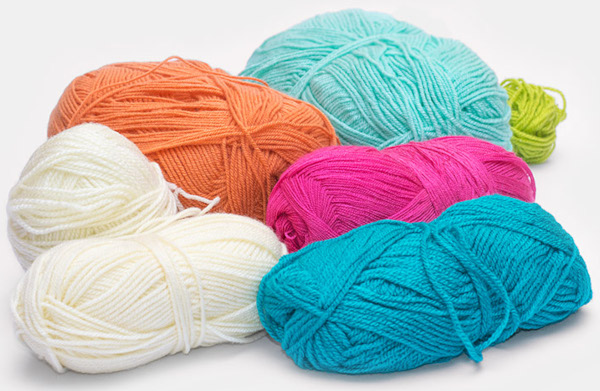
The production process includes several stages:
- Synthesis of polyacrylonitrile. At this stage, acrylonitrile undergoes polymerization, resulting in the formation of polyacrylonitrile. Polyacrylonitrile is a polymer that is the basis for the production of acrylic yarn.
- Fiber shaping. Polyacrylonitrile is melted and forced through spinnerets, special holes that shape the fibers. This creates fibers that then cool and harden.
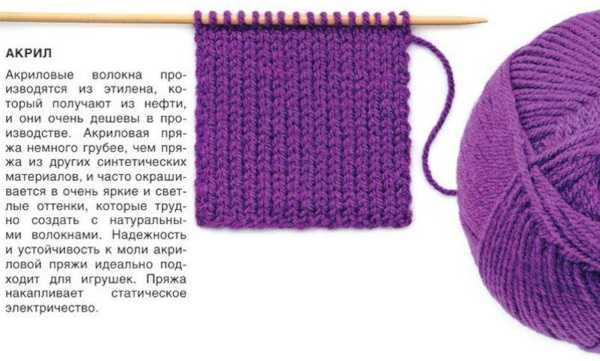
- Fiber processing. The fibers are treated with special compounds. For example, they can be exposed to antistatic or water-repellent compounds.
- Fiber twisting. The fibers are twisted into threads, which are then wound onto bobbins.
- Thread finishing. The threads undergo additional processing, which may include dyeing, bleaching or applying other coatings.
Positive properties
The yarn has a number of advantages and positive properties that make it popular among manufacturers and consumers:
| Property name | Brief description |
| ease of knitting | Due to its structure, it slides well on the knitting needles or hook, which simplifies the process of creating products. This is especially useful for beginner knitters who are just mastering the art of knitting. Great for knitting machines. |
| hypoallergenic | It is safe for people with sensitive skin. This property is especially important when creating children's clothing or products that come into contact with the skin. |
| has the ability to retain heat | It is suitable for creating warm clothes and accessories that will keep you warm during the cold season. |
| easy to paint | It can take on a wide range of colors and shades, allowing manufacturers to create diverse collections. This makes acrylic yarn attractive to consumers who want to experiment with colors and styles. |
| color fastness | It does not fade or shed after washing, making it an ideal choice for creating long-lasting and vibrant pieces. |
| strength | It is resistant to abrasion and tearing, making it durable. This is especially important for products that are subject to intensive use, such as sportswear or activewear. |
| ability to retain shape | It does not shrink or stretch, allowing you to create items with clear lines and contours. This makes it ideal for knitting a variety of patterns and designs. |
| is light in weight | This allows you to create airy and graceful products that will not create additional stress on the body. |
| affordable | It is cheaper than many natural materials, which makes it accessible to a wide range of consumers. This allows people to create beautiful and high-quality products without significant costs. |
Negative qualities
Acrylic yarn has some disadvantages and negative properties that should be taken into account when using it:
| Property name | Brief description |
| low air permeability | Due to this property, the product will cause discomfort when worn for a long time. |
| tendency to form pellets | This can worsen the appearance of the garment and make it less attractive. To prevent pilling, it is recommended to use special care products for acrylic yarn. |
| requires special care | When worn for a long time, it may be less durable than some other materials. It may lose its shape and color after repeated washing and exposure to sunlight. Therefore, it is important to follow the care instructions for acrylic yarn to extend its life. |
| peeling | Can be peeled. |
| low hygroscopicity | This means that the material does not absorb moisture well, which can lead to discomfort when wearing acrylic yarn clothing. In addition, low hygroscopicity can lead to the formation of static electricity, since the material is not able to effectively dissipate electrical charge. |
| electrifies | This can cause discomfort when in contact with the material and lead to static electricity build-up in clothing. |
| difficult to block | This means that it is difficult to secure in a certain position, which can make the material difficult to work with when creating complex patterns and designs. |
How to check quality
Acrylic yarn may have defects that may affect its quality and durability.
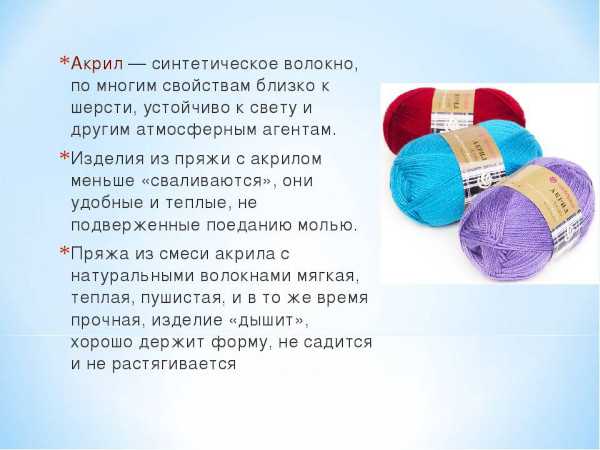
Quality can be checked in several ways:
- The skeins should be even, without knots or unevenness. The yarn should be of uniform thickness and color. If it has defects such as knots, unevenness or unevenness, this may indicate poor quality yarn.
- To check the strength of acrylic yarn, you can do a simple test. Take a small piece of yarn and try to tear it. If the yarn breaks easily, this may indicate its low quality. Quality acrylic yarn should be strong enough to withstand the stress of knitting.
- Take the yarn in your hands and rub it between your fingers. If the yarn squeaks, this may indicate its quality. But this is not the most reliable test.
- The elasticity of yarn is its ability to stretch and return to its original state. To test the elasticity of acrylic yarn, take a small piece of yarn and stretch it. Then release the yarn and see how quickly it returns to its original state. If this happens quickly, the test indicates good elasticity.
- The uniformity of a yarn is its ability to have the same thickness along its entire length. If it has an uneven thickness, this can lead to uneven knitting and a decrease in the quality of the finished product.
- The color of the yarn should be uniform. High-quality material should have bright and saturated shades that will shimmer in the sun. If it has an uneven or dull color, this may be a sign of low quality.
- Quality acrylic yarn should be odorless. If it has an odor, it may indicate the presence of harmful chemicals or improper storage of the yarn.
Color scheme
Available in a wide range of colors and shades, allowing you to create diverse and unique products. The color range includes basic, neutral, bright shades.
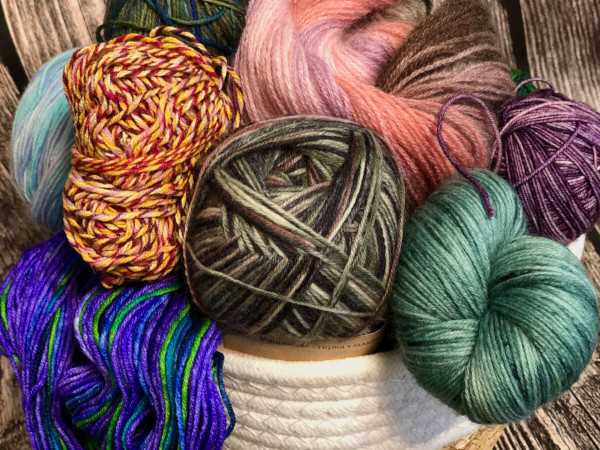
Acrylic yarn can be:
| Shade options | Characteristics and features |
| Monochrome | Available in a variety of colors from classic to modern, it allows you to create simple and elegant pieces. |
| Multicolored | It is a combination of several colors in one thread. This allows you to create bright and saturated products with an interesting visual effect. |
| Melange | It consists of threads of different shades of the same color. This creates the effect of depth and volume. |
| Shimmering | Contains shiny threads that give products shine and luster. |
| Iridescent colors | Creates a rainbow effect when light reflects off the yarn threads, creating different shades. |
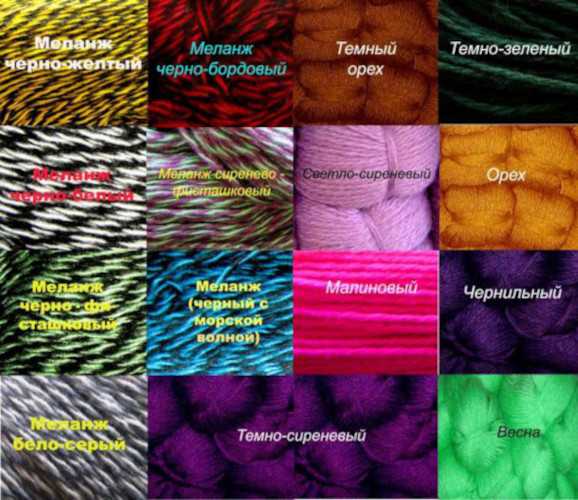
The yarn can also be decorated with various designs and patterns.
These could be:
- geometric figures;
- floral motifs;
- abstract patterns and more.
Acrylic or wool: which is better?
Wool yarn is a natural material obtained from animal hair. It has high thermal insulation, air permeability and hygroscopicity. Wool is also a hypoallergenic material, which makes it suitable for people with sensitive skin.
However, it can roll and become deformed when washed, and also requires more careful care.
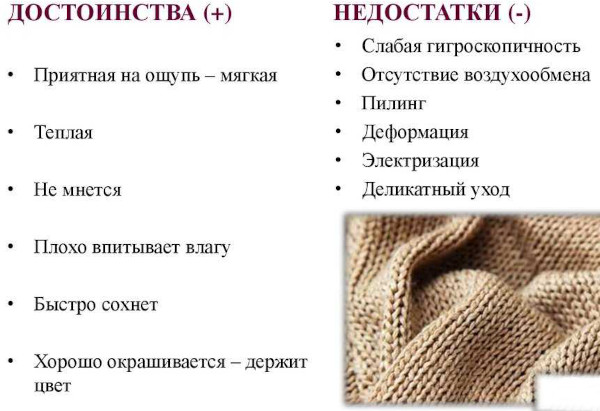
Comparison of acrylic and wool can be made according to the following criteria:
| Indicator | Comparative analysis |
| Thermal insulation | Wool provides better thermal insulation than acrylic, making it more suitable for winter clothing. |
| Breathability | Wool has better breathability than acrylic, allowing the skin to "breathe". |
| Hygroscopicity | Wool absorbs moisture better than acrylic, making it more comfortable to wear. |
| Abrasion resistance | Acrylic is more resistant to abrasion than wool, making it more suitable for clothing that is subject to frequent friction. |
| Care | Wool requires more careful care than acrylic. Wool products should be washed by hand or on a delicate cycle to avoid deformation and pilling. |
| Price | Acrylic is generally cheaper than wool, making it a more affordable material. |
The choice between acrylic and wool depends on your specific needs and preferences. If you want a durable, abrasion-resistant fabric that is easy to care for, acrylic may be a good choice. If you want a warm, breathable, hypoallergenic fabric, wool may be a better option.
Blended yarn with acrylic
Blended yarn is a textile material that consists of 2 or more different types of fibers. Acrylic is often used in blended yarns, which gives them additional properties. These properties depend on the percentage of acrylic, which can be as low as 5%.
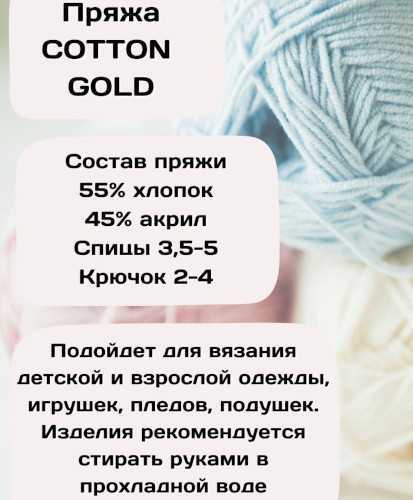
There are several types of blended yarn with acrylic:
| Types of blended yarns | Brief description |
| With natural fibers | The addition of natural fibers improves the breathability and thermal insulation of the yarn, making it more comfortable to wear. |
| With cotton | Adding cotton to a blended yarn with acrylic improves its breathability and hygroscopicity. This makes such yarn more suitable for knitting summer items. |
| With wool | Adding wool to a blended yarn with acrylic creates a material that has increased thermal insulation and softness. Such yarn is ideal for knitting winter items. |
| With mohair | Mixed yarn made from acrylic with added mohair has unique qualities that make it popular among handicraft enthusiasts. The addition of mohair, a natural fiber obtained from the wool of Angora goats, makes the yarn soft, fluffier and warm. Thanks to acrylic, the yarn retains its shape and does not stretch after washing, and mohair gives it volume and airiness. This allows you to create beautiful and original products. |
In general, mixed acrylic yarns are a choice for those who value comfort, warmth and originality in their products. Mixed yarn with acrylic is a universal material that is suitable for knitting various products. It has strength, elasticity and the ability to retain shape, which makes it popular among knitters.
What can be connected
You can create a variety of products from acrylic yarn:
- Toys for children — all this can be created using acrylic yarn. Children's toys are bright and attractive. It perfectly retains its shape and does not wear out over time, which makes acrylic yarn toys strong and durable. Such things are safe for children, since acrylic does not cause allergies and does not contain harmful substances.
- Home accessories, such as blankets, pillows, rugs. They make curtains, bedspreads or even carpets. The color range will allow you to choose the perfect shade for any interior.
- Cloth acrylic yarn is durable and long-lasting. Using acrylic yarn, you can create a stylish jumper, a cozy sweater and a cardigan. Thanks to its properties, acrylic yarn provides comfort and warmth at any time of the year.
- Accessories. For example, scarves, shawls, gloves. These products not only keep you warm in the cold season, but also become a stylish addition to any outfit.
- Headwear Acrylic yarn hats, such as caps and berets, protect from cold and wind. They can also be stylish and fashionable.
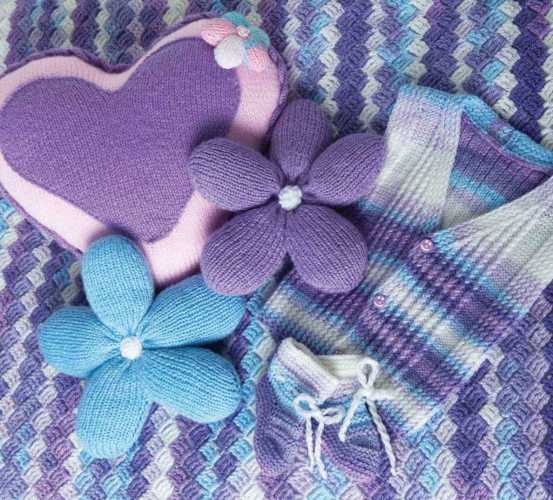
From mixed acrylic yarn with cotton you can knit:
- sweaters;
- cardigans;
- dresses;
- scarves;
- hats.
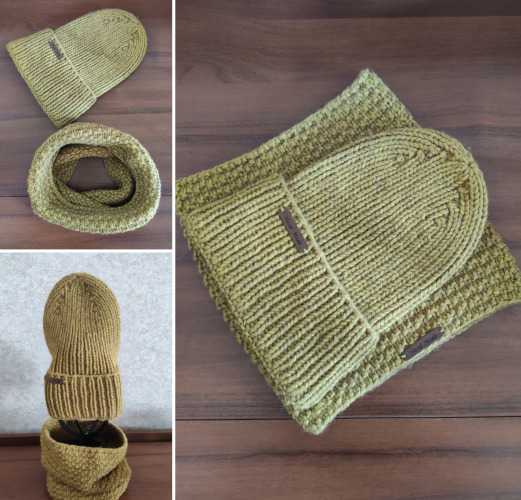
Yarn with wool is suitable for knitting warm items such as:
- sweaters;
- scarves;
- hats;
- socks.
Wool gives the yarn warmth and softness, and acrylic gives it strength and resistance to deformation.
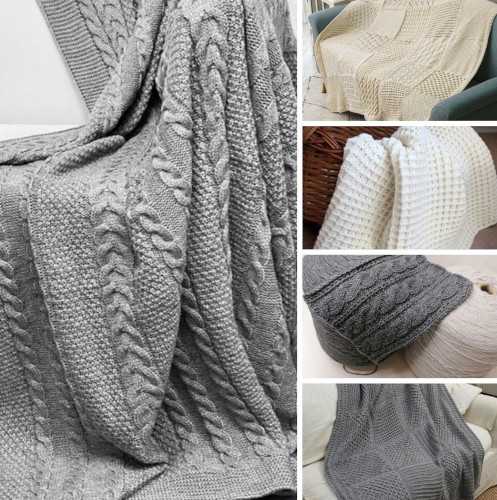
Acrylic yarn with mohair is suitable for:
- Knitting sweaters, cardigans, hats and scarves. Due to the softness and fluffiness of mohair, products made from this yarn are especially cozy and pleasant to the touch.
- Production of decorative interior items. From mixed acrylic yarn with mohair you can knit blankets, pillows, bedspreads and other decorative elements that will add coziness and warmth to your home.
- Creation of accessories. From such yarn you can knit bags, wallets, gloves and other accessories that will look stylish and original.
- Self made. The mixture of acrylic and mohair allows you to realize the most daring creative ideas, creating unique and inimitable handmade products.
- Children's clothing. Due to its softness and hypoallergenicity, blended acrylic yarn is suitable for knitting children's clothing.
When choosing a blended acrylic yarn, you should pay attention to the thickness of the thread and the purpose of the product. For knitting warm and dense products, it is recommended to choose yarn with a wool content of at least 30%, and for light and openwork products - yarn with cotton or mohair content.
How to care for items knitted from acrylic yarn
Acrylic yarn products require certain care to maintain their original appearance and attractiveness. Before washing, acrylic clothing should be checked for stains and traces of dirt. If any, treat with a special stain remover.
Acrylic items can be soaked in warm water with a mild detergent or a special soaking agent. Long soaking is not recommended.
Sometimes items can only be washed in cold water. However, most acrylic items can be washed in a washing machine using a delicate cycle at a temperature no higher than 30°C.

When washing acrylic yarn items, use a mild detergent without bleaching additives to preserve the brightness and color of the item. The garment should be placed in a laundry bag or a sealed bag to prevent it from becoming tangled or damaged by fasteners and buttons on other items of clothing.
Rinsing acrylic yarn products is an essential step in their care after washing. It is not recommended to use hot water for this purpose.
Also, to avoid stains or streaks, avoid using rinse aids or bleaching additives. Since acrylic is electrified, it is recommended to add an antistatic agent when rinsing.
Drying of acrylic yarn products should be done on a horizontal surface to prevent their deformation or loss of shape. It is worth putting a backing on the surface beforehand to remove excess moisture.
It is not recommended to dry such items in direct sunlight or on a radiator, as this may cause loss of color or change in size. You can hang the item on a hanger when drying.
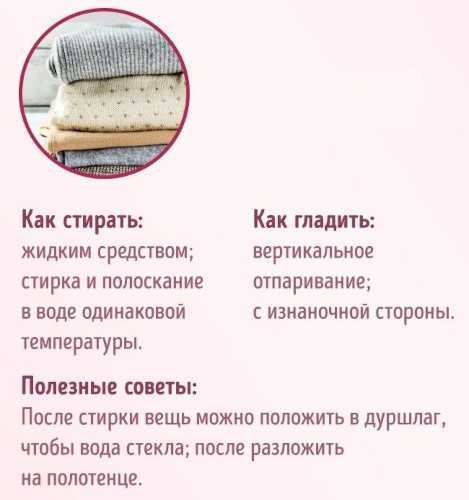
It is better to choose a well-ventilated place to speed up the drying process. It is forbidden to wring it out or use a machine dryer. Acrylic products are recommended to be wrung out, but not twisted, to avoid deformation.
Acrylic does not require ironing, but if necessary, you can use an iron at minimum or medium temperature. Before ironing, it is recommended to lay a base of clean fabric to avoid improper heating of acrylic fibers. But it is better not to iron such products.
To remove wrinkles from acrylic items, you can use a steamer. It is recommended not to get too close to the surface of the item and not to hold the steam jet in one place for too long to avoid possible damage to the fibers. But it is advisable not to use this procedure.
By caring for acrylic items according to the instructions provided, they can be preserved for many years.
Acrylic yarn is a versatile material that has a number of advantages. It is durable, retains its shape, is easy to dye, is safe for the skin, and is affordable. These properties make it a popular choice for manufacturers and consumers around the world.
Video about acrylic yarn
Pros and cons of acrylic yarn:
